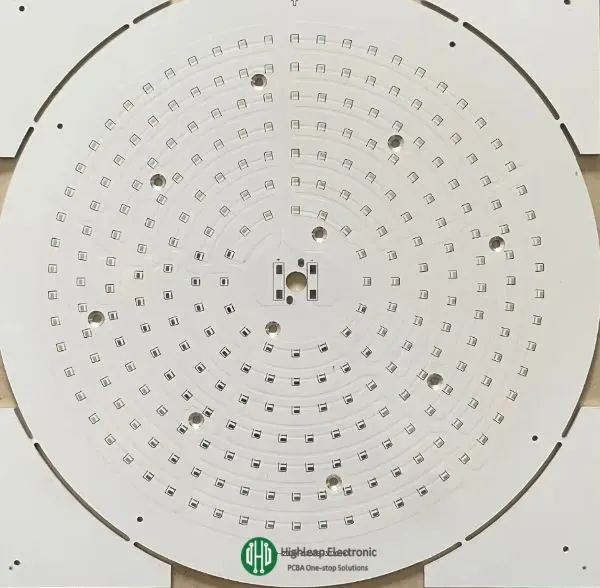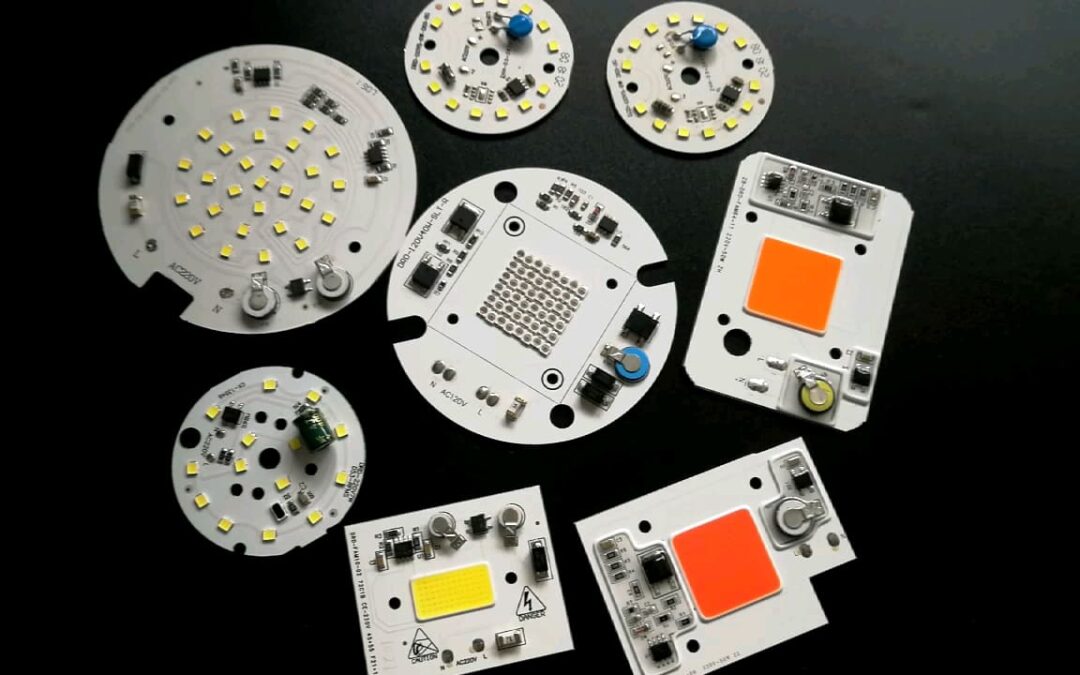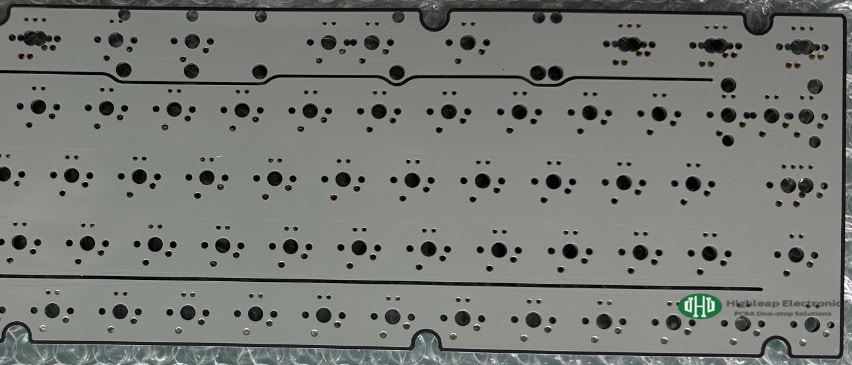Back to blog
Understanding PCB Substrate Materials: Types, Characteristics, and Applications

Introduction to PCB Substrate Materials
Printed Circuit Boards (PCBs) are the backbone of modern electronic devices, providing the foundation for components to be interconnected and functioning as intended. At the heart of every PCB is the substrate material, a crucial element that determines the board’s performance, reliability, and manufacturability.
Substrate materials serve as the foundation for the conductive traces, components, and other elements that make up a PCB. They provide mechanical support, electrical insulation, and thermal management, ensuring the PCB operates efficiently and reliably. The choice of substrate material is critical, as it can impact the PCB’s electrical performance, thermal behavior, and overall reliability.
Historically, PCB substrate materials were limited to rigid materials such as FR-4, a type of fiberglass-reinforced epoxy laminate. However, advances in technology have led to the development of a wide range of substrate materials, including flexible and rigid-flex materials, high-frequency materials, and metal-core substrates.
Each type of substrate material offers unique characteristics and advantages, making it suitable for specific applications. For example, flexible substrates are ideal for applications where space is limited or where the PCB needs to conform to a curved surface. High-frequency materials are designed for use in RF and microwave applications, where signal integrity is critical.
In this blog post, we will explore the different types of PCB substrate materials available, their characteristics, and their applications. We will also discuss the importance of selecting the right substrate material for your PCB design and provide tips for choosing the best material for your application.
Whether you are designing a simple single-layer PCB or a complex multi-layer board, understanding the characteristics of different substrate materials is essential for ensuring the performance, reliability, and manufacturability of your PCB. Join us as we delve into the world of PCB substrate materials and discover the key factors to consider when choosing the right material for your next PCB design project.
Importance of Substrate Materials in RF/Microwave Circuits
RF and microwave circuits operate at high frequencies, typically in the range of hundreds of megahertz to several gigahertz. At these frequencies, the electrical properties of the substrate material become critical, as they can affect signal integrity, power handling capability, and thermal performance. Here are some key factors to consider:
- Dielectric Constant (Dk): The dielectric constant of the substrate material determines the speed at which signals propagate through the board. A low Dk is desirable for RF/microwave circuits, as it minimizes signal delay and distortion.
- Loss Tangent (Df): The loss tangent of the substrate material determines the amount of signal loss due to absorption and dissipation. A low Df is crucial for maintaining signal integrity in high-frequency circuits.
- Thermal Conductivity: The thermal conductivity of the substrate material affects its ability to dissipate heat generated by the components. In high-power RF applications, efficient heat dissipation is essential to prevent thermal damage.
- Mechanical Properties: The mechanical strength and flexibility of the substrate material determine its durability and suitability for various form factors. Flexible substrates are often used in applications where the board needs to bend or conform to a curved surface.
- Environmental Stability: The substrate material should be stable over a wide range of temperatures and environmental conditions to ensure reliable performance in real-world applications.
Types of PCB Substrate Materials
Choosing between hard and soft PCB substrate materials is a critical decision that significantly impacts the performance and functionality of your printed circuit boards (PCBs). Each type of material offers unique characteristics and advantages, making them suitable for different applications and environments. Understanding the differences between hard and soft PCB substrate materials can help you make an informed decision based on your specific needs and requirements.
Hard PCB Substrate Materials
Hard, or rigid, PCB substrate materials are made from solid substrates that prevent the board from bending. These materials are commonly used in applications where the PCB must retain its shape and structural integrity, such as computer motherboards. Hard PCB materials are typically ceramic-based and offer several advantages, including:
- High thermal conductivity (e.g., 170W/mK): This property allows for efficient heat dissipation, making hard PCB materials suitable for applications requiring effective thermal management.
- Strong dielectric properties: Hard PCB materials provide excellent electrical insulation, ensuring reliable performance and preventing electrical interference.
- High operating temperature (>350ºC): Hard PCB materials can withstand high temperatures, making them suitable for use in environments with elevated heat levels.
- Low expansion coefficient (<4 ppm/C): Hard PCB materials exhibit minimal expansion or contraction in response to temperature changes, ensuring dimensional stability.
- Smaller package size due to integration: The compact nature of hard PCB materials allows for the integration of components, reducing the overall size of the PCB.
- Hermetic packages possible, 0% water absorption: Hard PCB materials can be used to create hermetically sealed packages, preventing water absorption and ensuring the integrity of the components.
- Limited to no outgassing: Hard PCB materials do not release gases when exposed to high temperatures, making them suitable for applications requiring low outgassing.
Popular Ceramic-Based PCB Materials
- Aluminum (Al2O3): Aluminum is the most common ceramic PCB material, known for its strong thermal dielectric properties, low expansion, and exceptional high-frequency performance.
- Aluminum Nitride (AlN): AlN offers high thermal conductivity and strength, making it suitable for applications requiring efficient heat dissipation and reliable performance.
- Beryllium Oxide (BeO): Although highly toxic during machining, BeO is valued for its high thermal conductivity and low expansion, making it suitable for demanding applications such as high-powered industrial microwave ovens and high-voltage amplifier ICs.
Soft PCB Substrate Materials
Soft, or flexible, PCB substrate materials are designed to enable the PCB to flex and move. These materials are often used in applications where flexibility and compactness are essential, such as wearable devices. Soft PCB materials offer several advantages, including:
- Flexibility: Soft PCB materials can be bent, folded, or wrapped around edges, allowing for greater design flexibility and compactness.
- Lightweight: Soft PCB materials are lighter than their rigid counterparts, making them ideal for applications where weight is a concern.
- Environmental resistance: Soft PCB materials can be waterproof, shockproof, or corrosion-resistant, making them suitable for use in harsh environments.
- Cost-effectiveness: While soft PCB materials may cost more for fabrication, they can save on overall costs by reducing the need for additional components or materials.
Popular Soft/Flexible PCB Materials
- Polytetrafluoroethylene (PTFE): Known for its temperature stability and low dissipation factor, PTFE is commonly used in applications such as antennas, power amplifiers, and automotive cruise control.
- Polyimide: Polyimide offers good electrical properties, a wide temperature range, and high chemical resistance, making it suitable for applications in various industries, including automotive, aerospace, and consumer electronics.
- PEEK: PEEK is known for its high melting point and resistance to chemicals, radiation, and extreme temperatures, making it ideal for use in demanding applications such as X-ray machines, gamma ray devices, and electronic systems on aircraft.
Flex-Rigid PCBs
Flex-rigid PCBs offer a combination of flexible and rigid materials, providing the benefits of both. These boards consist of multiple layers of flexible PCB, such as polyimide, attached to a rigid PCB layer. Flex-rigid PCBs are often used in aerospace, medical, and military applications due to their unique combination of flexibility and rigidity.
Choosing the right PCB substrate material is crucial for ensuring the performance, reliability, and functionality of your printed circuit boards. Whether you opt for a hard, soft, or flex-rigid PCB material depends on your specific application requirements, environmental conditions, and budget constraints. By understanding the characteristics and advantages of each type of material, you can make an informed decision that meets your needs and ensures the success of your PCB designs.
The Significance of FR-4 in PCBs
FR-4, or Flame Retardant 4, is a key substrate material in the fabrication of printed circuit boards (PCBs). Its popularity stems from its affordability, versatility, and compatibility with a wide range of applications. FR-4 is composed of layers of prepreg, which consists of fiberglass matting impregnated with epoxy resin. This composition gives FR-4 its characteristic properties and makes it the standard choice for many PCB designs.
Properties of FR-4
1. Electrical Insulation: FR-4 offers high dielectric strength, making it suitable for applications where electrical insulation is crucial. This property ensures that the PCB can operate safely and reliably, even in high-voltage environments.
2. Strength-to-Weight Ratio: Despite being lightweight, FR-4 has a high strength-to-weight ratio, providing structural integrity to the PCB. This is essential for maintaining the shape and stability of the board, especially in demanding applications.
3. Moisture Resistance: FR-4 is resistant to moisture, which helps protect the PCB from environmental factors that could degrade its performance over time. This property ensures the longevity of the PCB, even in humid conditions.
4. Temperature Resistance: FR-4 can withstand a wide range of temperatures, making it suitable for use in diverse environmental conditions. This property ensures that the PCB can perform reliably in both high and low temperature environments.
Limitations of FR-4
While FR-4 offers many advantages, it does have limitations, particularly in high-frequency applications. The material exhibits high dielectric loss at microwave frequencies, making it less suitable for high-speed digital circuits or high-frequency analog applications above a few gigahertz (GHz). In these cases, alternative materials with lower dielectric loss may be more suitable.
Variants of FR-4
FR-4 is available in several variants, each offering different properties and applications:
- Standard FR-4: This is the most common type of FR-4, with a glass transition temperature (Tg) of around 130°C. It is affordable and widely used for various PCB applications.
- High-Temperature FR-4: This variant has a higher Tg of around 170-180°C, making it compatible with lead-free reflow technology. It is suitable for applications requiring higher temperature resistance.
- Halogen-Free FR-4: This variant is environmentally friendly, as it does not contain halogen compounds. It is also compatible with lead-free reflow technology, making it suitable for eco-conscious applications.
- FR-1, FR-2, and FR-3: These variants are mainly used for single-layer PCBs and offer different Tg values and resin compositions to suit specific applications.
Alternative Materials to FR-4
For applications where FR-4’s limitations are a concern, alternative materials such as PTFE-based substrates or ceramic-based materials may be used. These materials offer lower dielectric loss at microwave frequencies, making them more suitable for high-frequency applications.
In conclusion, FR-4 remains a popular choice for PCB fabrication due to its affordability, versatility, and overall performance. However, for applications requiring high-frequency performance, designers may need to consider alternative materials to achieve optimal results.
High-performance FR-4 Materials
The Df parameters of Nelco N4000-13 and N4000-13SI are as follows: 10Hz parameters, and the rest are 1GHz parameters:
- Shengyi S1860: Dk=3.6; Df=0.008; Tg=210°C; Td=335°C
- Isola FR408HR: Dk=3.7; Df=0.0091; Tg=200°C
- Isola Getek: Dk=3.9; Df=0.010; Tg=180°C
- Nelco N4000-13: Dk=3.7; Df=0.009; Tg=210°C
- Nelco N4000-13SI: Dk=3.4; Df=0.008; Tg=210°C
- Isola IS620: Dk=3.6; Df=0.008; Tg=200°C
It is recommended to prioritize the use of N4000-13 and N4000-13SI.
conclusion
In conclusion, the selection of PCB substrate materials is a critical decision that significantly influences the performance, reliability, and manufacturability of printed circuit boards. Whether opting for hard or soft materials, each type offers distinct advantages tailored to specific applications and environmental conditions. Hard PCB substrate materials provide robust mechanical support, high thermal conductivity, and strong dielectric properties, making them ideal for applications requiring structural integrity and efficient heat dissipation. On the other hand, soft PCB substrate materials offer flexibility, lightweight construction, and environmental resistance, making them suitable for compact, space-constrained designs and harsh operating conditions.
Furthermore, the significance of FR-4 in PCB fabrication cannot be overstated. As a widely used substrate material, FR-4 offers affordability, versatility, and compatibility with a diverse range of applications. Its properties, including high dielectric strength, moisture resistance, and temperature stability, make it a reliable choice for many PCB designs. However, it’s essential to acknowledge FR-4’s limitations, particularly in high-frequency applications where its high dielectric loss may pose challenges. In such cases, alternative materials like PTFE-based substrates or ceramic-based materials may be preferred to achieve optimal performance. Ultimately, by understanding the characteristics and limitations of different substrate materials, designers can make informed decisions to ensure the success of their PCB designs.
PCB & PCBA quick quote
Related Articles

Metal Core PCB,MCPCB,Thermal Conductive PCB Material Guide
Metal Core Printed Circuit Boards (MCPCBs)Hey, welcome to the interesting world of Metal Core Printed Circuit Boards (MCPCBs)! Ordinary PCBs use an FR4 dielectric core, but MCPCBs are different. They use a metal substrate, such as aluminum, copper, or iron alloys, as...

Understanding Aluminum Substrate PCB: Types and Advantages
[pac_divi_table_of_contents title="On this article" default_state="closed" included_headings="off|on|on|off|off|off" exclude_headings_by_class="on" active_link_highlight="on" level_markers_3="icons" title_container_padding="10px|15px|10px|15px|true|false"...

Characteristics and Applications of Black Core PCB Material
[pac_divi_table_of_contents title="On this article" default_state="closed" included_headings="off|on|on|off|off|off" exclude_headings_by_class="on" active_link_highlight="on" level_markers_3="icons" title_container_padding="10px|15px|10px|15px|true|false"...
Take a Quick Quote
